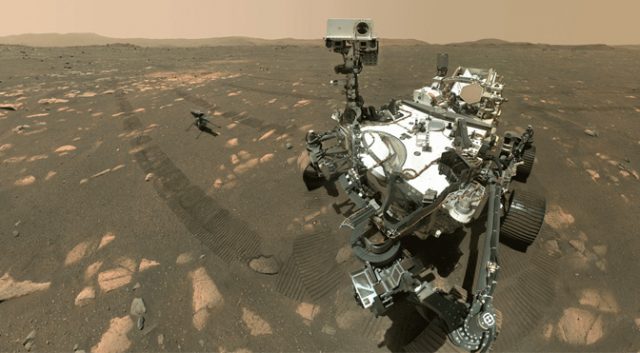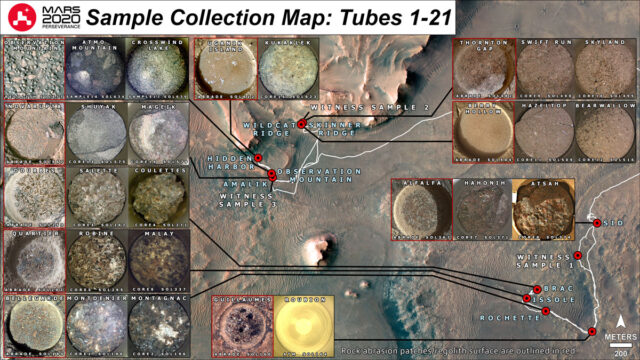Perseverance Rover Begins Setting Up Sample Depot on Mars

NASA’s Perseverance rover is laying the groundwork to get Mars samples back to Earth. After 15 months of drilling carefully selected bits of the red planet, the robot is beginning the process of setting up a “sample depot” where the future sample return lander will be able to pick up the rover’s titanium rock core tubes. Perseverance won’t be leaving all its tubes in the dust, though.
Perseverance is in a region of Jezero Crater known as Three Forks, right at the base of the ancient river delta, which is to be a main focus of the mission going forward. Here, NASA plans to deposit the sample tubes so a future mission can scoop them up for a return to Earth. Since that mission is still in the planning phase, NASA is covering its bases on Mars. It dropped off a cache of several samples a few months back, and this new sample depot will be yet another backup for the tubes still contained inside the rover — Perseverance takes two cores from each notable rock, so it will keep duplicates of each tube it drops off.
NASA announced earlier this year that it and the European Space Agency had decided to drop the rover element of the sample return mission. Instead, NASA will build two helicopters based on Ingenuity’s design that will be able to pick up sample tubes and deliver them to the Mars Ascent Vehicle (MAV). Perseverance is supposed to deliver its samples directly to the MAV, but in the event it cannot do so, the drones will have to pick up tubes from the depot. So, NASA has to make sure they’re arranged in an efficient manner.

Shown here is a representation of the 21 sample tubes (containing rock, regolith, atmosphere, and witness materials) that have been sealed to date by NASA’s Perseverance Mars rover. Credit: NASA/JPL
To ensure the helicopters can retrieve samples without encountering obstructions or damaging the samples, NASA will set them out in a zig-zag pattern. Each sample needs at least 18 feet (5.5 meters) of clear space around them — some may be up to 49 feet away from another tube. It will take at least a month for the team to become familiar with the terrain around Three Forks and select locations for each tube. Plan A is to have Perseverance deliver its samples to the MAV in the coming years. If we need Plan B, NASA wants to minimize the risk.
Early next year, Perseverance will begin what NASA calls the Delta Top Campaign. The rover will move up higher on the delta, giving the team a chance to search for interesting deposits left by the ancient river. The Sample Return Mission could launch as soon as 2028. The lander will either rendezvous with Perseverance or set course for the sample depot at Three Forks. The ESA’s orbiter will be waiting to carry the samples back to Earth as soon as 2033.
Now read:

Comments are closed.